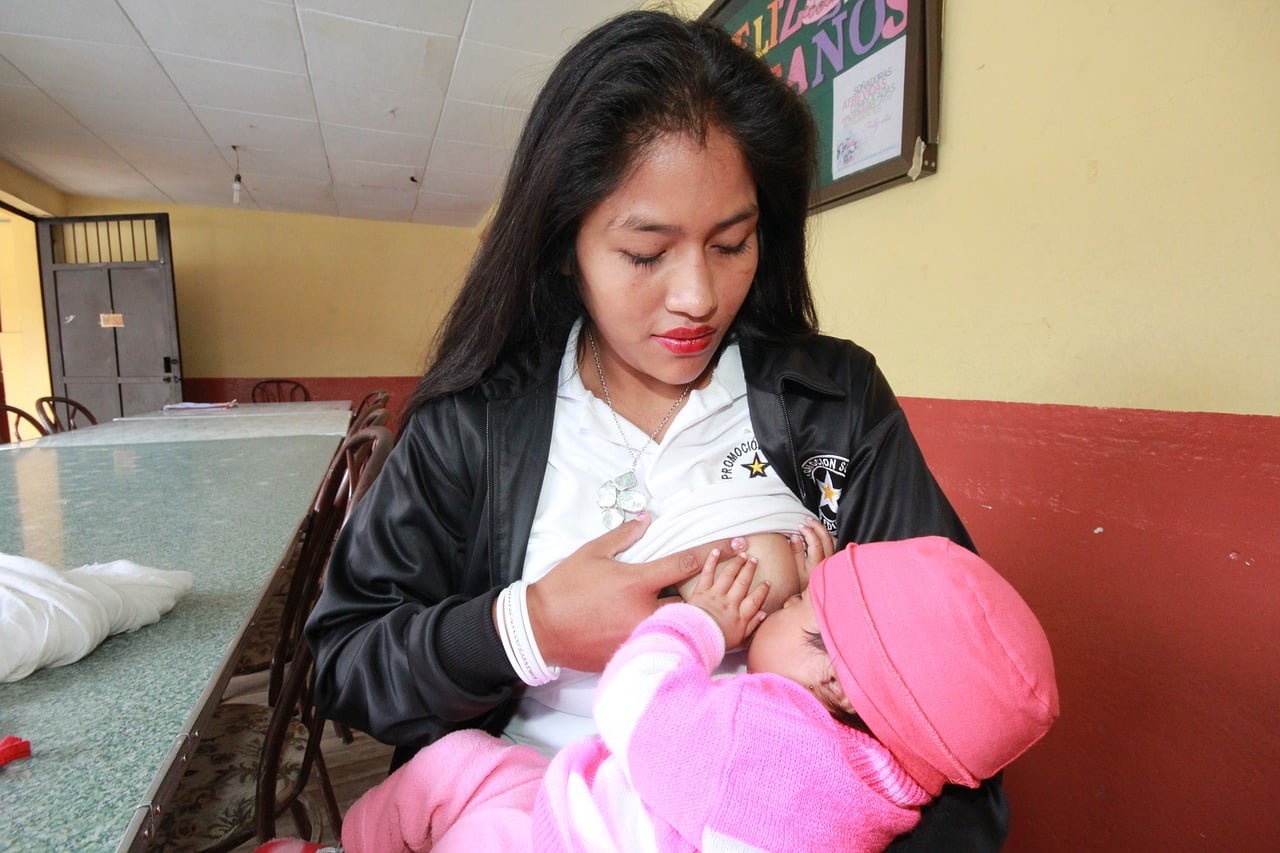
Breastfeeding involves feeding a baby with its mother's milk.
Breastfeeding is a type of feeding that consists of a baby feeding with its mother's milk. Milk , precisely, is a food with unique characteristics that allows the mother to transmit her defense mechanisms to the newborn, while the act of breastfeeding strengthens the mother-child relationship.
Specifically, we can determine that there are two clear types of breastfeeding. Thus, on the one hand, there is exclusive breastfeeding , which is one in which the infant only feeds on milk extracted from his mother, except for syrups or drops that he has to take for medical reasons.
On the other hand, we find what is called predominant breastfeeding . In this specific case, the main food the baby ingests is the aforementioned milk that comes from its wet nurse or its mother. However, also take syrups, vitamins or various types of liquids such as juices, water or even infusions.
Breastfeeding and the WHO
The World Health Organization (WHO) considers that breastfeeding should be the exclusive diet of a child in the first 6 months of life since, due to its properties, it is essential for healthy development. Once this stage has been passed, breastfeeding should be maintained, along with the progressive introduction of complementary feeding .
The WHO adds that breastfeeding should continue until at least 2 years of age. Even if the mother and child decide, it could be continued without a time limit . There have been cases where breastfeeding continued up to nine years of age.
Various studies have shown, starting at one year old, that breast milk becomes richer in fats and other nutrients , which allows it to complement an increasingly diversified diet of children from that age onwards.

The WHO recommends that, whenever possible, children be exclusively breastfed up to 6 months.
Your benefits
There are many benefits that breastfeeding brings for the baby , which is why, with some exceptions, there is a strong commitment to the mother feeding the baby that way. In this sense, among the main advantages are that said milk is rich in iron , it has the ideal composition for the child, the child who is fed with it suffers less constipation and can also digest it very well.
And all this without forgetting that in addition, the ingestion of said breast milk protects the baby from issues such as sudden death, from infections of various kinds since it is rich in defenses called immunoglobulins, and from future diseases. Among the latter, we should highlight diabetes, asthma, obesity , allergies or arteriosclerosis.
Likewise, among the benefits that this type of breastfeeding provides are those that benefit the mother, such as protecting her from osteoporosis or strengthening the bond with her child.
Discontinuation of breastfeeding
Herpes simplex in the nipple, AIDS and galactosemia in the baby are some of the few existing reasons why doctors recommend stopping breastfeeding, which is even compatible with numerous medications and interventions.
On the other hand, breastfeeding can be continued even during a new pregnancy , without any risk to the fetus. If the mother wishes, she can breastfeed her two children of different ages simultaneously. This situation is known as tandem breastfeeding .
